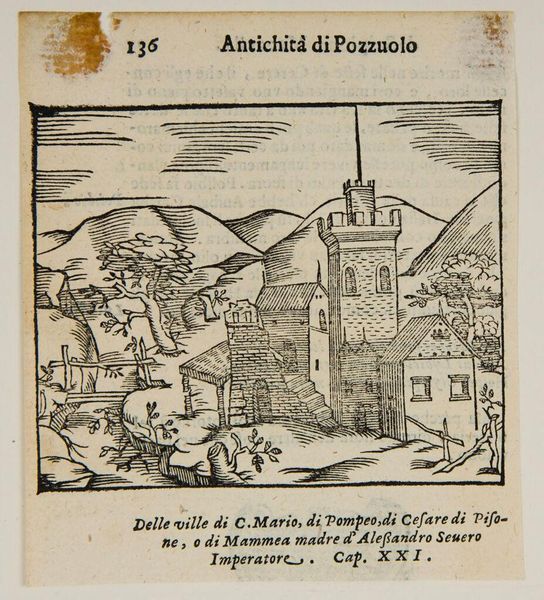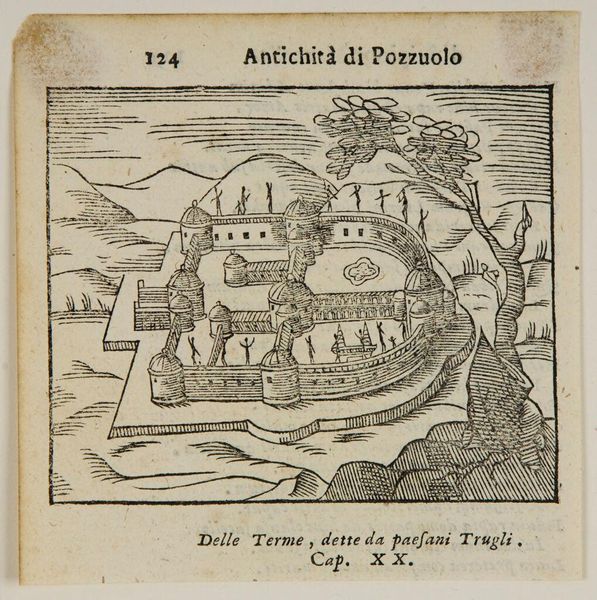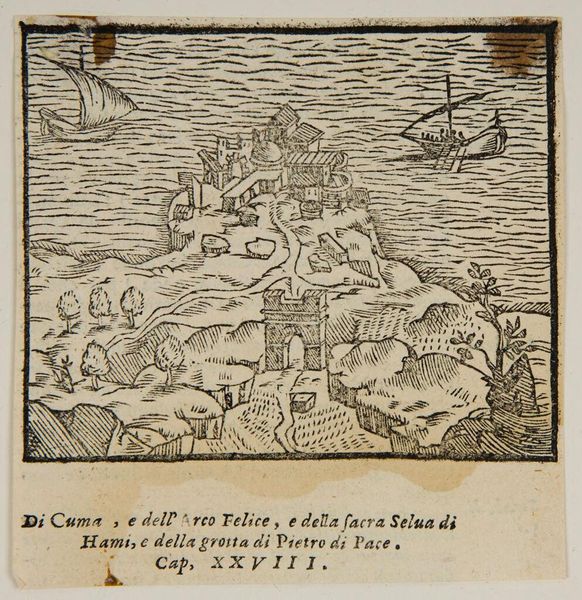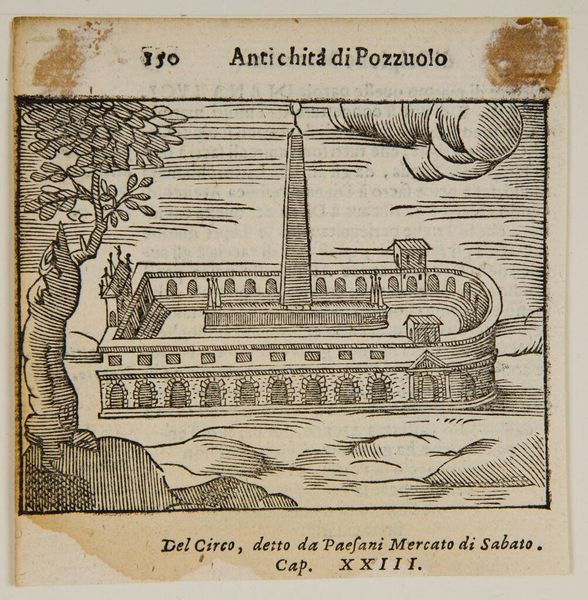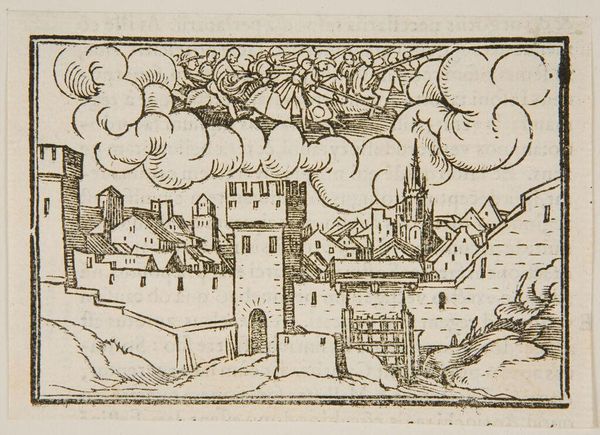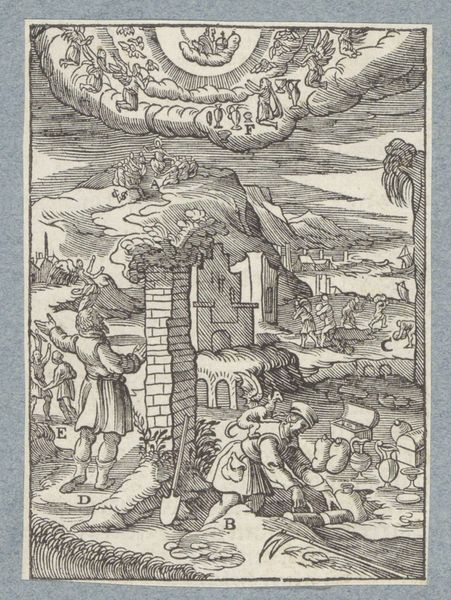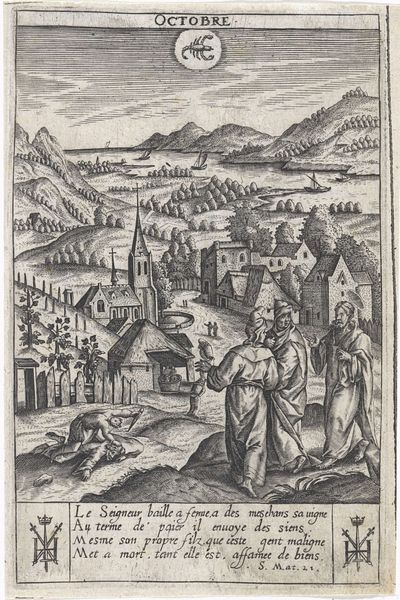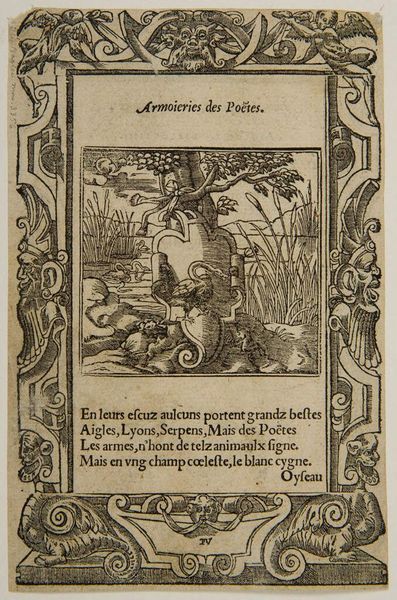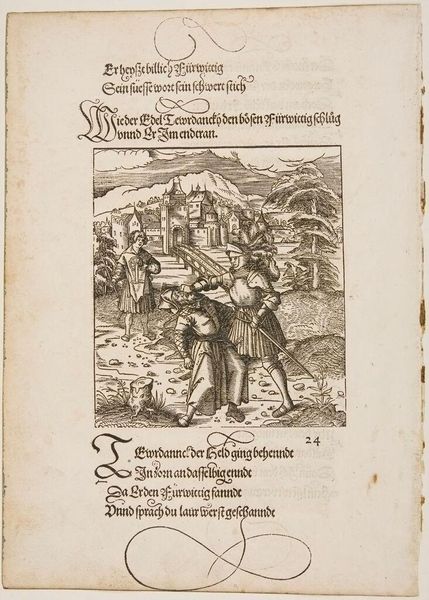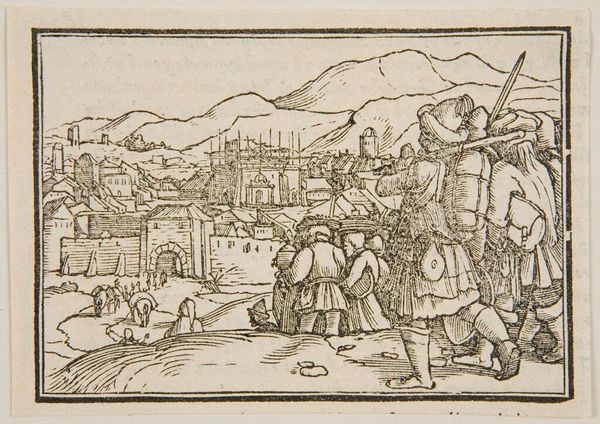
Copyright: CC0 1.0
Curator: This piece, titled "Village of Servilio Vacca," is presented as an anonymous work housed here at the Harvard Art Museums. What strikes you immediately about it? Editor: There's a raw, almost diagrammatic quality to it. The stark lines, the bare landscape... it feels less like a celebration and more like a record. Curator: Indeed. The hatching technique is interesting. I wonder about the labor involved, and the potential mass production of similar images. Consider the market for these types of prints, who was consuming them? Editor: That’s key. It's potentially part of a larger publication on antiquity, evidenced by the writing at the top. The image serves a didactic function, shaping a viewer’s understanding of history and place. Curator: Precisely. And how does the architecture, presumably meant to evoke a sense of history, interact with that intention? Editor: The tower dominates, conveying power and control. But the village feels somewhat exposed, vulnerable even within that historical narrative. Curator: It does invite further scrutiny when considering these power dynamics. Editor: It’s a fascinating snapshot, even with its limitations. A small image with large implications about how we construct and consume history.
Comments
No comments
Be the first to comment and join the conversation on the ultimate creative platform.
